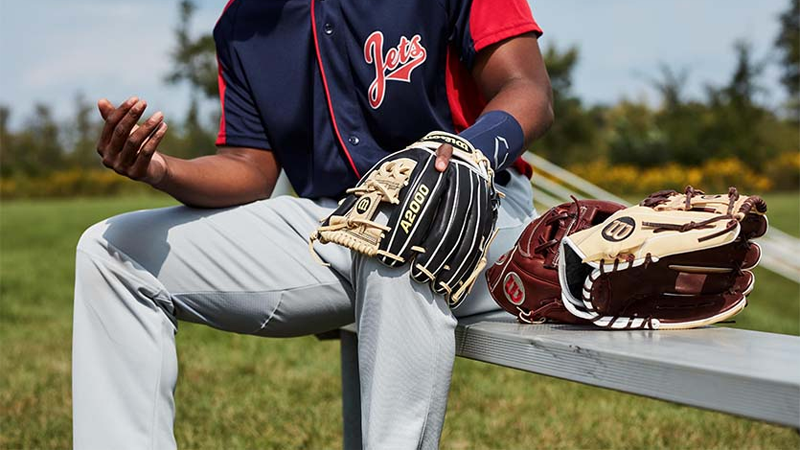Do you ever wonder how much a baseball weighs? It may seem like a simple question, but the weight of a baseball plays a crucial role in its performance. In this article, we will delve into the importance of baseball weight, explore the factors influencing it, and even take a trip down memory lane to discover how the regulations have evolved over the years. So, how much does a baseball weight?
According to the official MLB rules, a baseball must weigh between 5 and 5.25 ounces (141.75 to 148.83 grams). This standardized weight ensures fair play and consistency across all MLB games.
Understanding the Importance of Baseball Weight
The Role of Weight in Baseball Performance
Weight is a fundamental aspect of any sports equipment, and baseball is no exception. The weight of a baseball can impact various aspects of the game, such as pitch speed, hitting distance, and fielding ability. A properly weighted baseball allows players to achieve optimal performance and accuracy in their throws, hits, and catches. Understanding the significance of weight in baseball is key to appreciating its impact on the game.
When it comes to pitch speed, the weight of the baseball plays a crucial role. A heavier ball can be thrown with more force, resulting in a faster pitch. This can make it more challenging for batters to react in time, giving the pitcher an advantage. On the other hand, a lighter baseball may allow for better control and finesse, making it easier to throw accurate pitches.

Weight also affects hitting distance. When a batter makes contact with the ball, the weight of the baseball determines how far it will travel. A heavier ball will carry more momentum and have a greater chance of sailing over the outfield fence. Conversely, a lighter ball may not have enough power behind it to reach the same distance. Hitters must consider the weight of the baseball when adjusting their swing and aiming for optimal power and distance.
Fielding ability is another area where weight comes into play. A properly weighted baseball allows fielders to make accurate throws with ease. Too heavy of a ball may result in a slower release, while a ball that is too light may be difficult to control. Fielders rely on the weight of the baseball to make quick and precise throws, contributing to efficient and effective defensive plays.
Why Weight Matters in Professional Baseball
In the professional baseball world, every detail is meticulously considered and regulated, including the weight of the baseball. Professional players rely on consistent weight standards to ensure a level playing field. An accurate and standardized weight contributes to fair competition and allows players to focus on their skills without worrying about equipment disparities.
Weight consistency is especially crucial in professional baseball because it affects the game at the highest level. Pitchers rely on the weight of the baseball to fine-tune their craft and deliver consistent pitches. Batters train to adjust their swing based on the weight of the baseball they are facing. Fielders depend on the weight of the baseball to make quick and accurate throws. Any deviation in weight could throw off the delicate balance of the game and give an unfair advantage to one team.
Furthermore, weight regulations ensure that players can trust the equipment they are using. In a game where split-second decisions can make all the difference, players need to have confidence in the consistency and reliability of the baseball. By adhering to weight standards, professional baseball organizations uphold the integrity of the sport and ensure that players can focus solely on their performance.
Weight is not just a number on a scale when it comes to baseball. It has a significant impact on the performance and dynamics of the game. From pitch speed to hitting distance to fielding ability, the weight of the baseball affects every aspect of play. Understanding and appreciating the importance of weight in baseball allows players and fans alike to gain a deeper insight into the intricacies of the sport.

The Official Weight of a Baseball
Baseball, often referred to as America’s favorite pastime, has a rich history and a set of rules that govern the game. One important aspect of the game is the weight of the baseball. Major League Baseball (MLB), the premier professional baseball league in the United States, has established strict guidelines for the weight of a baseball.
According to the official MLB rules, a baseball must weigh between 5 and 5.25 ounces (141.75 to 148.83 grams). This standardized weight ensures fair play and consistency across all MLB games. The weight of the baseball plays a crucial role in the dynamics of the game, affecting pitching, hitting, and fielding.
Standards Set by Major League Baseball
The weight of a baseball is carefully regulated by MLB to maintain a level playing field for all teams and players. The specific weight range of 5 to 5.25 ounces has been determined through extensive research and testing to provide the ideal balance between performance and safety.
MLB’s dedication to creating a standardized weight for baseballs is rooted in the desire to promote fair competition and ensure that every player has an equal opportunity to succeed. By adhering to these weight standards, MLB aims to maintain the integrity of the game and provide an enjoyable experience for both players and fans alike.
Differences in Baseball Weights Across Leagues
While MLB has set a standard weight for baseballs, it’s important to note that other leagues, such as youth leagues or amateur leagues, may have different regulations. These variations in weight standards are typically implemented to accommodate the skill level and physical capabilities of the players.
For example, in youth baseball, where players are often at a younger age and still developing their skills, the baseballs used are typically lighter than those used in professional leagues. This lighter weight allows young players to have better control over the ball and reduces the risk of injury.
Amateur leagues, on the other hand, may adopt slightly different weight standards based on the level of play and the preferences of the players involved. These variations aim to strike a balance between performance and safety, ensuring that players can compete at their best while minimizing the risk of accidents or injuries.
Regardless of the league you participate in, using the correct weight baseball is crucial for skill development and player safety. Whether you’re a young aspiring player or a seasoned professional, understanding and adhering to the weight standards set by your league is essential to maintain the integrity of the game and promote fair competition.
Factors Influencing the Weight of a Baseball
When it comes to the weight of a baseball, several factors come into play. Understanding these factors can help players and enthusiasts gain a deeper appreciation for the intricacies of the game. Let’s take a closer look at some of the key elements that influence the weight of a baseball.

Materials Used in Baseball Construction
The materials used in the construction of a baseball play a crucial role in determining its weight. The core of a baseball is typically made of either cork or rubber, which provides the ball with its inner structure. This core contributes significantly to the weight of the baseball.
However, it doesn’t stop there. The core is then carefully wrapped in multiple layers of yarn, which further adds to the weight. The choice of yarn and the number of layers used can vary, impacting the overall weight and performance of the baseball.
Finally, the baseball is covered with a leather or synthetic material. The choice of cover material also affects the weight of the baseball. Leather covers, for example, tend to be slightly heavier than synthetic ones.
It’s important to note that while the weight of a baseball is influenced by the materials used, other factors such as durability and performance also come into play. Finding the right balance between weight, durability, and performance is a constant challenge for baseball manufacturers.
The Impact of Humidity and Altitude on Baseball Weight
Believe it or not, humidity and altitude can also have an impact on the weight of a baseball. In humid conditions, the yarn layers of a baseball may absorb moisture from the air. This moisture absorption can cause the ball to become slightly heavier, altering its weight and potentially affecting its flight trajectory.
On the other hand, when it comes to altitude, things can get even more interesting. In high-altitude environments, such as cities situated at a significant elevation, the reduced air density can influence the weight perception of a baseball. Due to the lower air resistance, a baseball may feel lighter when thrown or hit, creating a unique challenge for players who are accustomed to playing at lower altitudes.
Altitude can also impact the flight characteristics of a baseball. With less air resistance, the ball may travel farther and faster, making it an exciting environment for both pitchers and hitters.
Understanding the impact of humidity and altitude on the weight of a baseball adds another layer of complexity to the game. It highlights the importance of adapting to different playing conditions and the unique challenges they present.
So, the next time you hold a baseball in your hands, take a moment to appreciate the intricate factors that contribute to its weight. From the materials used in its construction to the environmental conditions it encounters, every detail plays a part in shaping the game we all love.
How to Measure the Weight of a Baseball
When it comes to measuring the weight of a baseball, accuracy is key. A precise measurement can provide valuable information about the ball’s quality and performance. To ensure you get the most accurate weight measurement, there are a few essential tools and steps you need to follow.

Tools Needed for Accurate Measurement
First and foremost, you will need a digital scale capable of precise measurements. It’s important to choose a scale with a high level of sensitivity to ensure that even the slightest variation in weight can be detected. This will help you obtain a more accurate reading.
Additionally, it’s crucial to make sure the scale is calibrated correctly before each measurement. Calibration ensures that the scale is accurately measuring the weight and eliminates any potential errors. By calibrating the scale, you can have confidence in the reliability of your results.
Step-by-Step Guide to Weighing a Baseball
- Start by ensuring the scale is set to zero. This step is necessary to account for any additional weight on the scale, such as dust or residue from previous measurements. Zeroing the scale helps establish a baseline for an accurate measurement.
- Gently place the baseball onto the center of the scale. It’s important to handle the ball with care to avoid any unnecessary pressure or impact that could affect the weight measurement.
- Wait for the scale to stabilize and display the final weight measurement. This step requires patience, as it may take a few moments for the scale to settle and provide an accurate reading. Avoid any sudden movements or disturbances during this time.
- Once the scale has stabilized, carefully record the weight. Make sure to note the unit of measurement, whether it’s ounces or grams, to avoid any confusion later on.
- Double-check the scale’s calibration. After each measurement, it’s essential to verify that the scale is still calibrated correctly. This step ensures the accuracy of subsequent measurements and helps maintain the reliability of your results.
By following these steps and using the right tools, you can confidently measure the weight of a baseball. Remember, accuracy is essential, so take your time and ensure all variables are accounted for. With precise measurements, you can gain valuable insights into the characteristics and performance of the baseball.
The History of Baseball Weight Regulations
Evolution of Baseball Weight Over the Years
The regulations surrounding baseball weight have not remained static throughout history. Over the years, baseball weight has undergone changes driven by a combination of player preferences, technological advancements, and league regulations. From the early days of baseball to the present, the weight of a baseball has played a significant role in shaping the game we know today.
Notable Changes in Baseball Weight Standards
One notable change in baseball weight occurred in the early 1970s when MLB introduced a livelier baseball to increase offensive production. The weight of the baseball was decreased from 5.25 ounces to 5 ounces, resulting in a more lively and power-oriented game. However, this change sparked debates regarding the balance between pitchers and hitters and the impact on the overall integrity of the sport.
In conclusion, the weight of a baseball is not to be underestimated. From its influence on performance to its role in professional standards, the weight of a baseball affects every aspect of the game. Understanding the factors that influence weight and the historical context of baseball weight regulations can provide an additional layer of appreciation for America’s favorite pastime. So, the next time you hold a baseball in your hand, take a moment to consider the weight that has shaped the game for generations.


